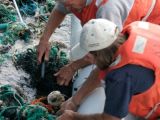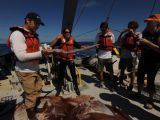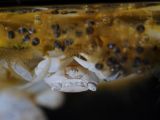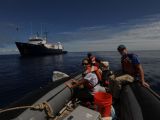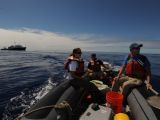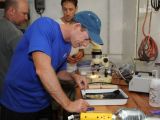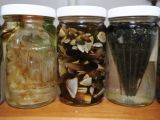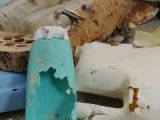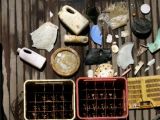The Great Pacific Garbage Patch is probably one of the few places in the world you really don't want your ship to down near. What may seem like a chain of islands from well above turns out to be nothing but hundreds of miles of loosely bound trash, floating around in the Northern Pacific Ocean. But the accurate situation of the gyre was still not known precisely until the new expedition, of which we were telling you about earlier this month, and whose members returned home on August 25th.
Dubbed the Project Kaisei, the initiative was composed of some 30 members, including the scientists, technicians and sailors. The mission had three distinct goals: to sample and analyze the debris in the garbage patch, to propose and test harvesting/reclamation technologies for the trash, and, finally, to propose possible solutions for clean-up that future missions could bring to fruition. A few days ago, the science ship Kaisei managed to complete the science phase of the mission, and the preliminary results have just arrived.
“More than 30 years ago, on my first trip to the North Pacific Gyre, I found a few glass ball fishing floats, one net and there were, in four days, perhaps two pieces of floating plastic. Returning now with Project Kaisei and researching the marine debris situation shows a startling change in this same area. In 30 minutes one easily can count up to 400 pieces of plastic on the sea's surface,” Ocean Voyages Institute Executive Director Mary T. Crowley, who is also a co-founder of the Project Kaisei, says.
The team located a large number of trawls at 17 sampling areas in the Garbage Patch, and noticed a very worrying and devastating trend. In all of the samples they collected from the depths, they found several forms of plastic, ranging from microscopic particles to large chunks. These types of plastic were observed to be ingested by small marine animals, which later on ended up feeding larger fish, and so on. The plastic eventually makes its way on supermarket shelves, the experts say, and the people don't seem to care. Overall, the number of marine species living in the gyre was significantly lower than anywhere around. Creatures were also discovered dead in drifting fishnets.
“One thousand miles from shore, with no sign of human life for days, yet our human 'footprint' is now apparent in even one of the most remote places on the planet. It was shocking to see the amount of small pieces of plastic, continuously, in all of our 100 sample nets, in more than 1,200 miles of sampling. This should be a message to everyone that our consumption patterns, and ways we dispose of products, have failed us for this to have occurred,” Project Director Doug Woodring, also a co-founder of the Project Kaisei, adds.
Here is a selection of pictures brought back by the North Pacific Garbage Patch expedition:
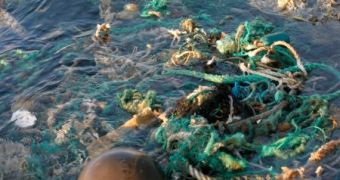
 14 DAY TRIAL //
14 DAY TRIAL // 
